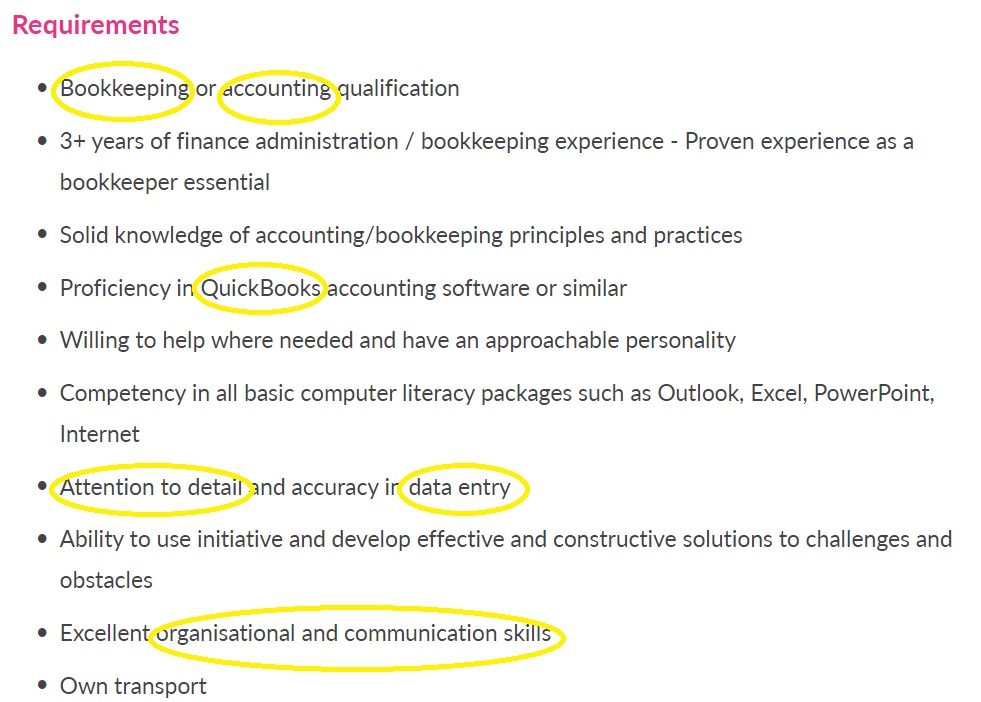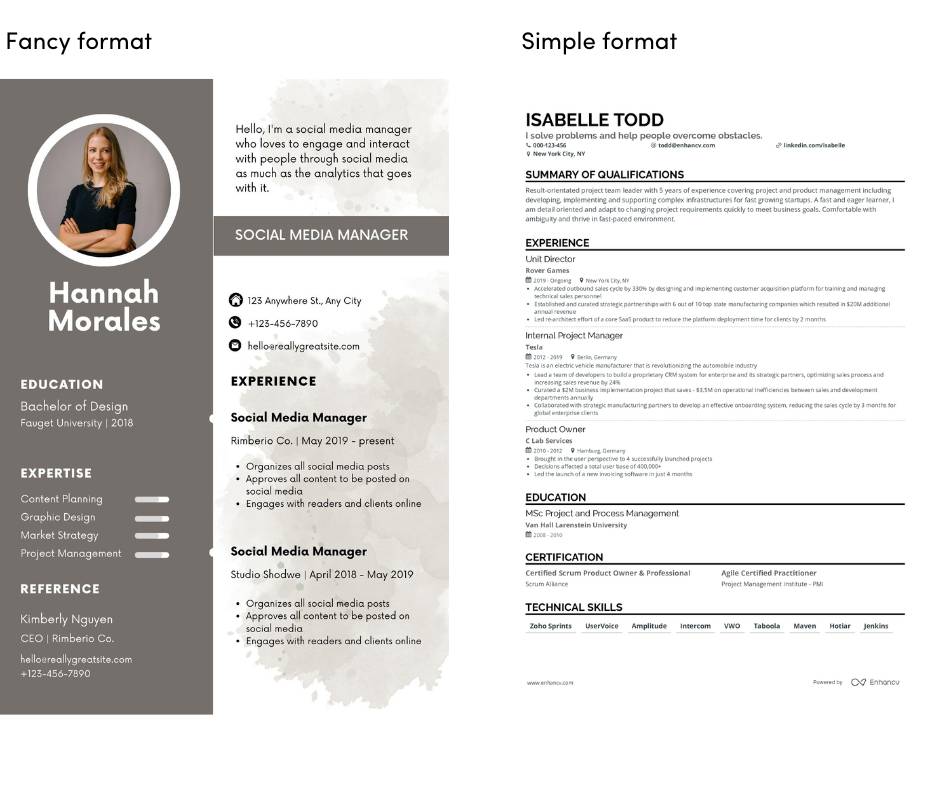
Technology is changing how we do everything, including applying for jobs and getting shortlisted. Many designer CV templates and programmes are available that can help you create fancy, visually appealing CVs. Although these are good for showcasing your uniqueness, they do not help you with the first step in the recruitment process.
Gone are the days when the employer had a pile of printed-out CVs on his/her desk that he/she needed to page through, and the best-designed one jumped out. Most online recruitment companies, including RecruitMyMom, use AI and applicant tracking systems to process large quantities of CV applications. This is why you need a CV that a computer can read and parse well into a recruiting system if you want to get shortlisted for a job.
When you register on our website, we ask that you upload your CV to the system so that we can parse the information from your CV into our database - your job-seeker profile. CV parsing refers to extracting information from CVs and converting it into a format that can be stored in our database to create your job-seeker profile. The parsing mechanism speeds up registration by preventing you from having to retype your CV into the registration form.
If your CV isn't in a format that is easy to parse, your information will be jumbled on your job-seeker profile and the database, and it may even cause gaps in your RecruitMyMom profile. Let's explore essential things to watch out for to ensure your CV stands out in the eyes of recruiters and gets noticed.
Step 1: Keep your CV headings simple
A CV heading is often displayed at the top, below your name and contact details. The headline highlights your value proposition as a job applicant.
Keep it short, catchy, and pertinent to the position you are applying for in your headline.
Examples include:
- Results-oriented business development manager with five years of experience.
- Experienced bookkeeper with eight years of experience in the property industry.
- Professional executive personal assistant with twelve years of experience dealing with C-Suite.

Use commonly used job titles:
For example, the advertised job title is “Wealth Investment Client Service Administrator.” If you’re applying to this job, ensure your job titles have the words "Client Service, Customer Support, and Administrator"; don’t use an obscure title like “Support Custodian or Happy Client Advisor.” Use the most common and likely job titles that potential employers will request. These are titles that honestly reflect what you did in your role.
“Wealth Investment Client Service Administrator with three years of experience.”
If you have worked for a wealth and investment company, add this to your CV, as the computer will look for words like investment or wealth.
This way, your CV will show up when a recruiter searches through the applications received on the ATS for that job title from a particular industry.
Step 2: Ensure relevant skills and keywords are included in your CV
If you want to get shortlisted for a job, ensure that the skills you list on your job application align with those required in the job description. Recruiters use a combination of job titles, skills, software, and location filters when they search for potential candidates. Reading through the job description can help you find the skills and keywords most likely to be of importance for the job.
Take note of the skills that appear most often (keywords can be single words or phrases). Then, if appropriate, add these keyword skills to your CV. Focus on industry-specific terminology, technical skills, and relevant qualifications.
For example, the job description for a bookkeeping and accounting administrative position is below. The job requirements include the keywords and key phrases necessary to perform the job. These keywords should be used in your CV since hiring managers will likely search for them when hiring for this position.

Include both long-form and acronym versions of keywords. For instance, if you have experience with customer relationship management software, you should include both "customer relationship management" and "CRM." By including both versions of key phrases, you will maximise your chances of having your CV noticed.
It may seem tedious, but always ensure your CV is customised for the job you are applying for. Doing this can improve your chances of being found by recruitment managers and help you get shortlisted for a job.
Step 3. A simple layout is best
Keep your CV format simple and easy to read. Use standard fonts and avoid complex layouts that may confuse the parser. Use clear headings and bullet points to organise information effectively. Ensure consistency in formatting throughout your CV to maintain readability. Chronological formatting parses the best.
Here's a simple structure for a chronological CV:
- Contact information
- Career Objective (optional)
- Education (most recent first)
- Work experience (most recent first)
- Skills
- Certifications and training
- Awards and achievements
- Leadership roles
Tip: Keep it short. Do not be too wordy when you write a CV. In our experience, employers only look at a CV for six to seven seconds.
Step 4: Design and layout
Your CV is packed with information, so it is crucial to prepare it so that it can easily be parsed and that no information is left out, causing gaps in your online job-seeker profile or online-generated CV. Here are some tips to ensure a simple, consistent design.
Tips for a good design and layout of a CV:
- Create standardised headings most common to a CV format (Tertiary Education; Job Title, Industry, Roles and Responsibilities, Reason for leaving etc)
- Pick an easy-to-follow font that reads well on paper and in digital format.
- Make it 12 points in font size.
- Set consistent line spacing between 1 and 1.15 points
- Separate the headings from the rest of the text and make them slightly bigger
- Left-align the contents
- Add page numbers (e.g. Page 2 / 4) in the footer of each page, along with your name and contact information (just in case the pages get mixed up after printing)
- Dates should be formatted in one of two ways: MM/YYYY or “March 2024.” Do not use the year only.
- Feel free to use bold, italics, underlining, and bullets (but stick to the standard bullet circle or square)
- Use a Word document or PDF so it can be parsed easily.
Step 5: 3 Things to AVOID when formatting a CV to be parsed
- Avoid using headers and footers. These make it difficult for the system to parse your information correctly as it will not know what to do with this information.
- Don’t use graphics, images, tables, graphs, columns, or symbols. The parsing system can often get confused; keep the format it simple.
- Don’t get too creative or fancy with section headings. Use standard CV headings like “work experience” or "Education," as opposed to “what I do” and “what I studied.”
An example of a fancy CV versus a CV that will parse easily:
Although the first example below is beautifully designed, the parsing system will have trouble collecting the information. The second example is more readable for computer parsing.

There is a place for a well-designed CV. If you meet the recruiter or employer in person or ask a friend to pass on your CV directly to a referee, submit a fancy CV. This will make a good impression.
However, when you apply online for jobs that do not require you to submit your original CV, like RecruitMyMom, having the correct information in a format that a parsing system can read is much more important.
How to check if your CV has parsed well on RecruitMyMom:
- Login to your job-seeker profile through the candidate portal.
- You can now view your full job-seeker profile.
- Ensure that all the fields are correctly filled in.
- If they are not, it means your CV did not parse well. You can manually update these fields. Remember to save your changes.
That’s it! Follow these five steps and login to check your job-seeker profile. Your CV will have a good chance of being accepted by our Recruitment Managers, making it out of the RecruitMyMom database and into the hands of an employer. Join our talent community and start your job hunt today.


